Arizona is part of the family
Our family has a long association with Arizona. My father was based in the capital Phoenix when he was in the Navy and I was born there during that time. My grandparents and other family members lived there and my brother Bruce and his wife Trish still live in a mountain town in north-eastern Arizona after doing their university in the state’s southern city of Tucson. And through many family holidays, photos and memories we’ve formed a strong connection to this fascinating desert state.
The Mohave National Preserve had been an unexpected surprise for us but our timeline to spend the weekend with my brother and his family in Arizona and the biting cold wind that howled through the valley combined to force us to move on.
California and Arizona are dramatically divided by the famous Colorado River which snakes its way through the arid desert and mountain landscape, creating a vibrant lifeline to the communities, farmers, ranchers and holiday-makers that ply these parts. We stopped briefly at Havasu City to marvel at how their economy is totally focused on short and long term stayers with their boats and RVs who enjoy the benefits of the river and we also had a quick look at the famous London Bridge which was literally moved from London to this town and has attracted millions of visitors ever since.
As we travelled south along the river we saw numerous communities which existed solely because of what the flowing water offered. Particularly along the banks near the town of Parker which was surrounded by striking high cliffs on both sides of the river, many RV communities had sprung up and with them marinas, golf courses and shopping centres to support this unique desert/river lifestyle.
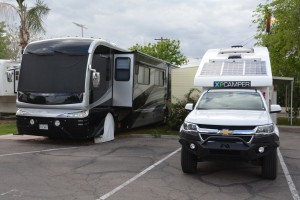
Tramp is dwarfed by one of the many huge RVs we see on the road – this time in the Scottsdale Trailer Corral
We headed east, staying off the huge Interstates which were dominated by massive trucks and their equally massive RVs, puttered through the historic town of Wickenberg which had a family connection because my maternal grandparents once lived there, and pushed on to the metropolis of Phoenix and the upmarket suburb of Scottsdale where we had planned two unique events for this evening.
We pulled into the Scottsdale Trailer Corral, yes, that’s right, a modest but clean RV park within walking distance of Scottsdale Stadium, the spring training home of the San Francisco Giants. Staying at an RV park is not ideal but we couldn’t miss this one so close to the stadium, and after all, it had a good name.
We enjoyed a fabulous evening at the baseball, the cool desert air, the ragged mountains in the background, the small friendly stadium, the many Giants fans dressed in orange and black, and of course the baseball. Hot dogs, $12 cold beer, great atmosphere, all good fun.
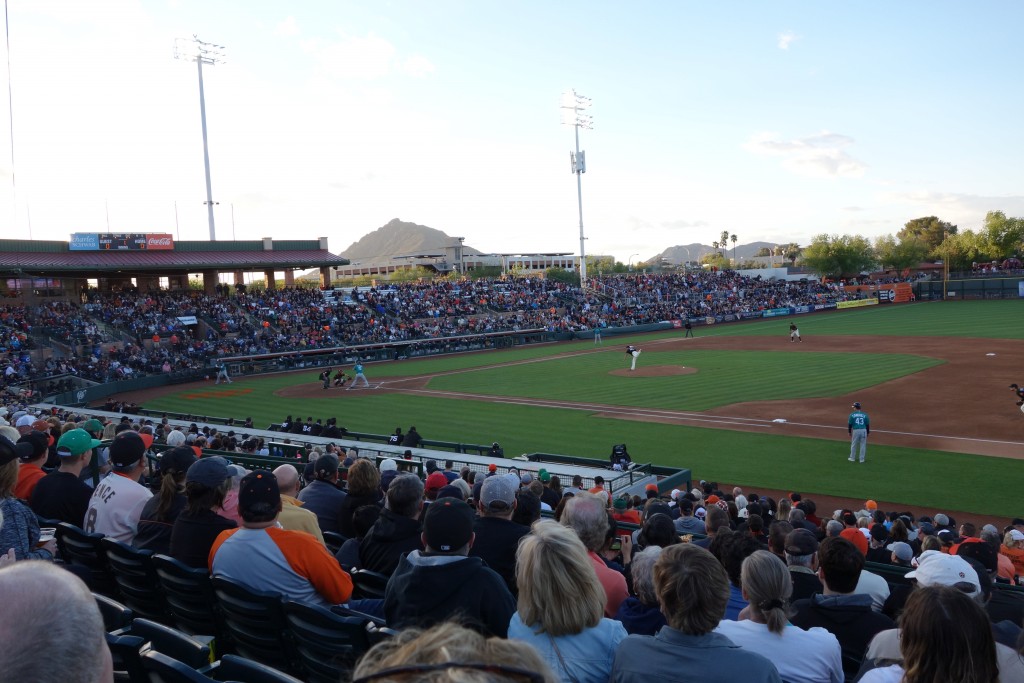
Our favourite San Francisco Giants playing a preseason game against the Marlins on a pleasant desert evening
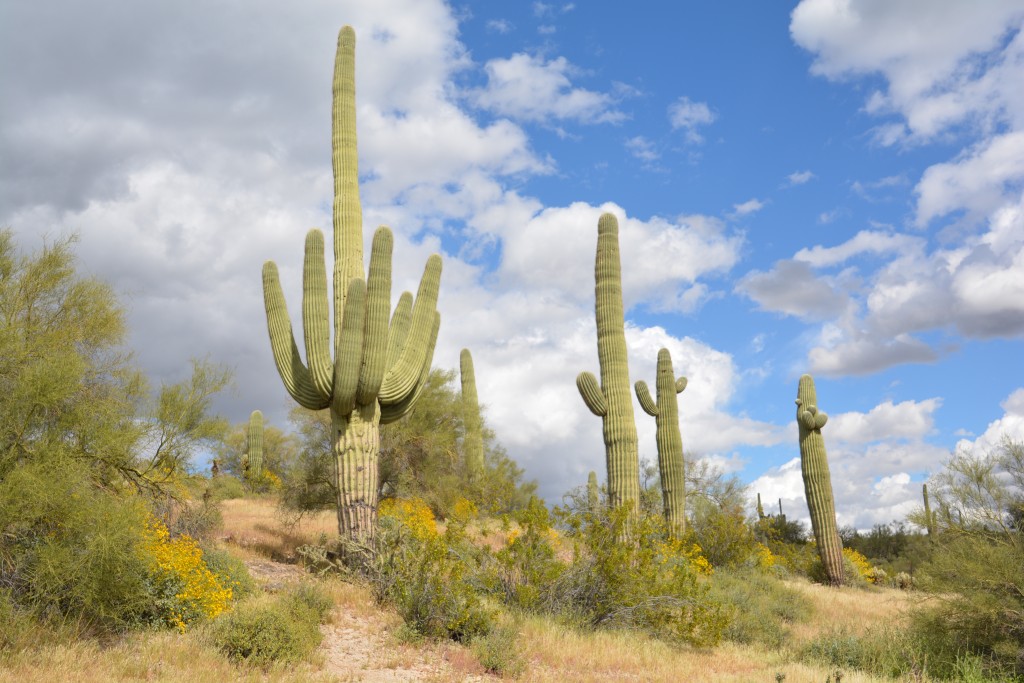
Magnificent saguaro cacti covered the high mountain slopes – great fun to see all their different shapes and sizes
Our next destination was Bruce and Trish’s home in the high mountains to the north so we hit the scenic roads again, crossing the desert which now started to feature the large graceful saguaro cactus, until we wound our way up the mountains over 6,000 feet to the town of Pinetop Lakeside. Here Bruce and Trish have raised their five children, three of which are still at home, and they welcomed us to their paradise for a great weekend.
Julie and I have always lived in cities and made a point to venture into the bush as often as possible but Bruce and Trish have chosen a beautiful – if somewhat remote – place to raise their beautiful family and enjoy their zoo of animals in the backyard, the high mountains, cold lakes and smell of tall Ponderosa pines. I think they’ve got it about right.
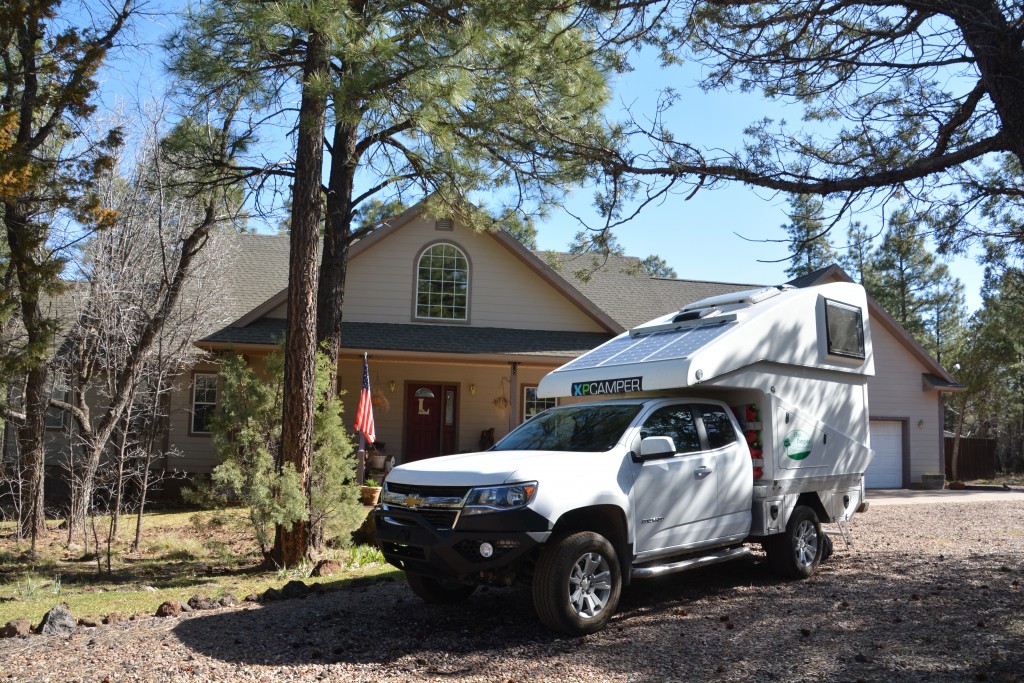
Tramp gets to rest for a couple of days while we enjoy the luxurious facilities at the Bruce and Trish Airbnb
One day we went for a 4.3 mile walk through the tall pine forest that surrounds their house, accompanied by the lovable family pony Mudbud, ridden superbly by our youngest niece Ellie. This was a good time to stretch our legs, explore this beautiful place they live in and catch up on their life in the mountains. We also went to a concert to hear our nephew Quintin after he was selected to sing in a choir made up of junior high kids from across the state. Great fun!
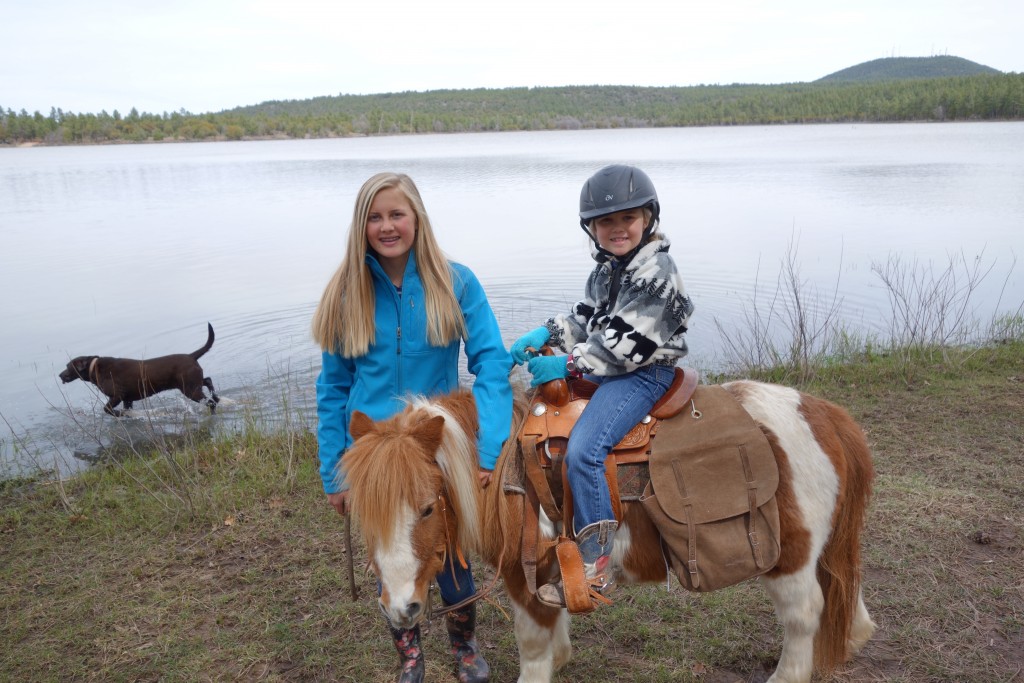
Megan and her little sister Ellie pose with the family pony Mudbud with one of the family dogs Penny splashing in the background
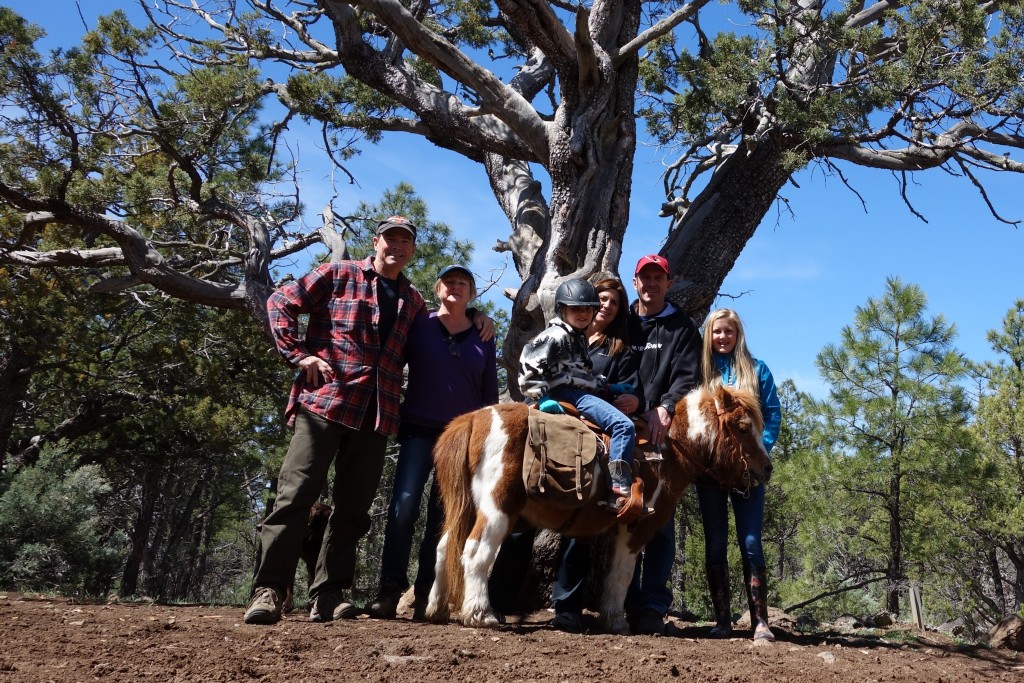
Team photo under a gnarly old tree as we walk in the national forest behind Brush and Trish’s remote home
But after a weekend of exploring the local scene, drinking beer on the back deck and telling old family stories Julie and I moved further north to explore more delights of the desert. Our plan, such as it was, was to move north for a day and travel through a series of Indian reservations to a quirky spot in the middle of the desert where the four states of Arizona, Colorado, Utah and New Mexico all meet. From there we were planning to move into Colorado and visit the famous Mesa Verde National Park with its building remains of the pueblo Indians that lived there centuries ago.
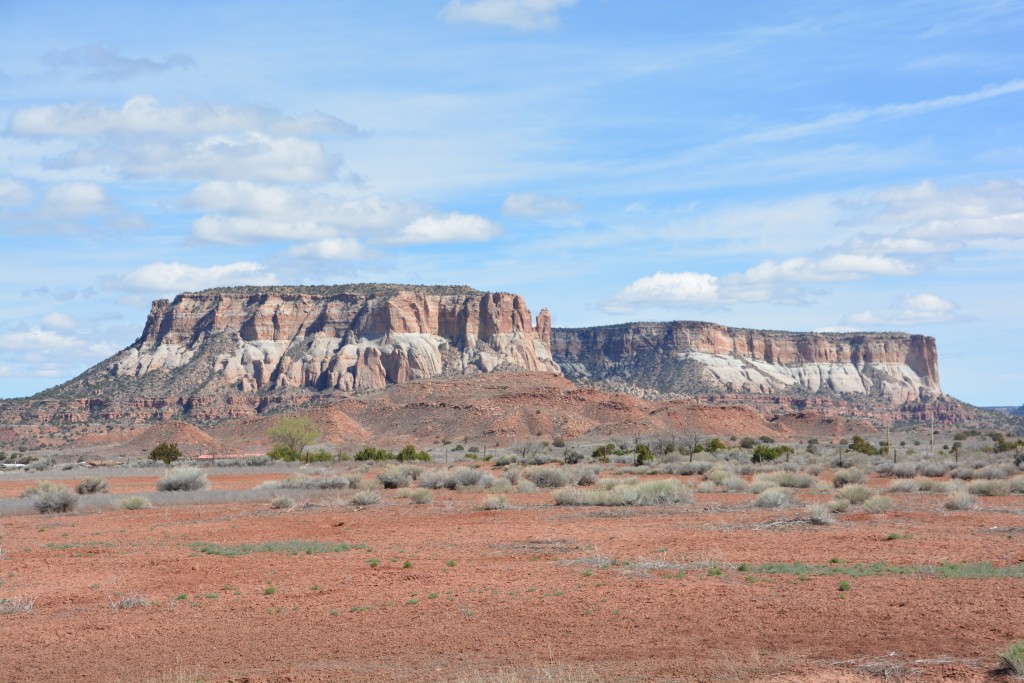
Who says deserts are boring. The stunning scenery we saw all through the desert kept us very entertained
That was the plan, as loosely defined. At the start of the trip we said we didn’t want to over-plan our trip and get bogged down in the details of exactly where we were going each day. That would ruin the spontaneity and surprise factor of the trip. On the other hand, if you do very little real planning, like googling or ringing ahead to find out what’s open, well…things can go wrong.
We first passed through the Apache Indian Reservation, beautiful land high in the Apache-Sitgreaves National Forest, with snow patches still on the ground and the spring grasses starting to grow. At one mountain pass of 9,026 feet (2,911 metres, our highest point on this trip so far) with a ski resort nearby Tramp was forced to come to a screaming halt as a huge big horn sheep was grazing on the road’s edge. His giant horns curled up and around the sides of his head and he carried a calm gracefulness as he looked at us. This was a special treat and we got out to admire this beautiful beast as he went about his breakfast.
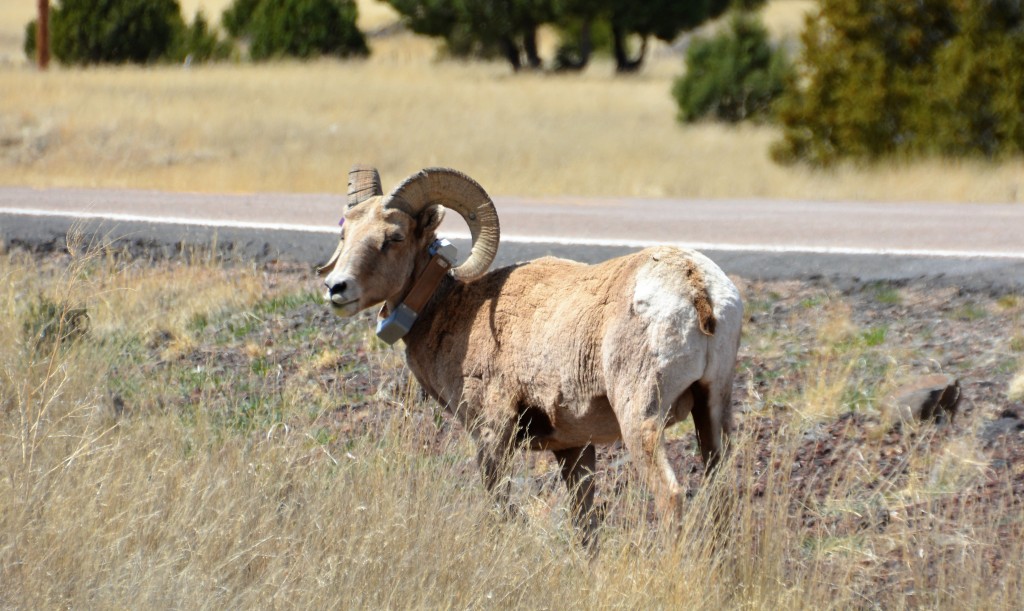
A large big horn sheep grazed by the side of the road as we admired his huge horns – notice his collar acting as a tracking device
But we were learning that deserts take many different forms. At this high altitude no cactus can survive and when the tall alpine pines disappeared the high altitude desert is more rocky and scrubby. We made our way into New Mexico, a new state for Julie, and passed through the Zuni Indian Reservation with its dramatic desert and high mesa landscape.
Indian Reservations are land handed over by the government to the local Indian communities to manage as their own within the confines of federal law, much like the Australian government has done for Aboriginal communities. One major difference in the US is that the Indians can build casinos to spur employment and attract visitors to spend money on their land. This probably has both a positive and negative impact on the overall community but on a number of occasions we would see a massive huge hotel, casino and tourism complex plopped down in the middle of a barren desert.
We moved into the Navajo Indian Reservation, which covers vast areas of land in northern New Mexico and Arizona, and passed through the scrappy Indian town of Shiprock before the road briefly weaved its way back into Arizona and arrived at the gates of the Four Corners Monument. The emphasis here is on the word ‘gate’ because it appeared that the site is administered by the Navajos under New Mexico time which is an hour later than Arizona time and we had arrived an hour after its closing, even though we had come in from Arizona.
Okaaaay, lesson learned, a little more planning would be helpful, and we followed the road into Colorado and across the Ute Indian Reservation, our fourth of the day, towards Mesa Verde National Park. Colorado is most famous for the Rocky Mountains and some fabulous ski resorts but it has much more to offer, such as the stunning high altitude desert we passed through to get to Mesa Verde.
On arrival we discovered the campsite in the park doesn’t open until mid April – a couple of weeks away – but we found a super little place nearby at 7,000 feet (which is 2,250 metres, slightly higher than Mt. Kosciuszko, the highest point in Australia) where we built a fire and stayed warm in a night as the temperature dropped to zero (or 32F, whatever). And no surprise, we spent the night around the fire checking books and maps, doing maybe a bit more planning for the next couple of days.

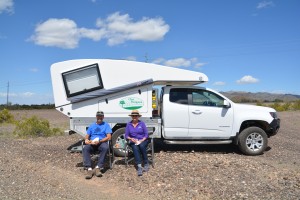
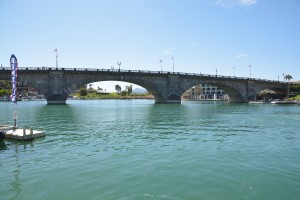
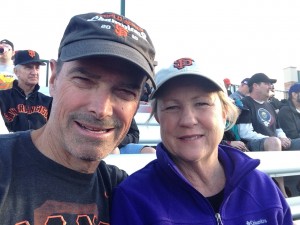
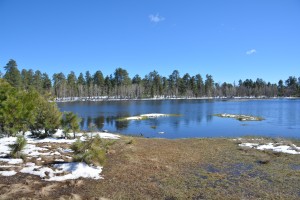
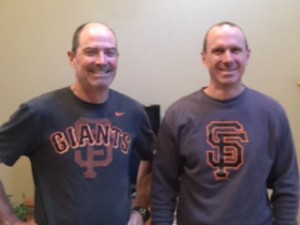
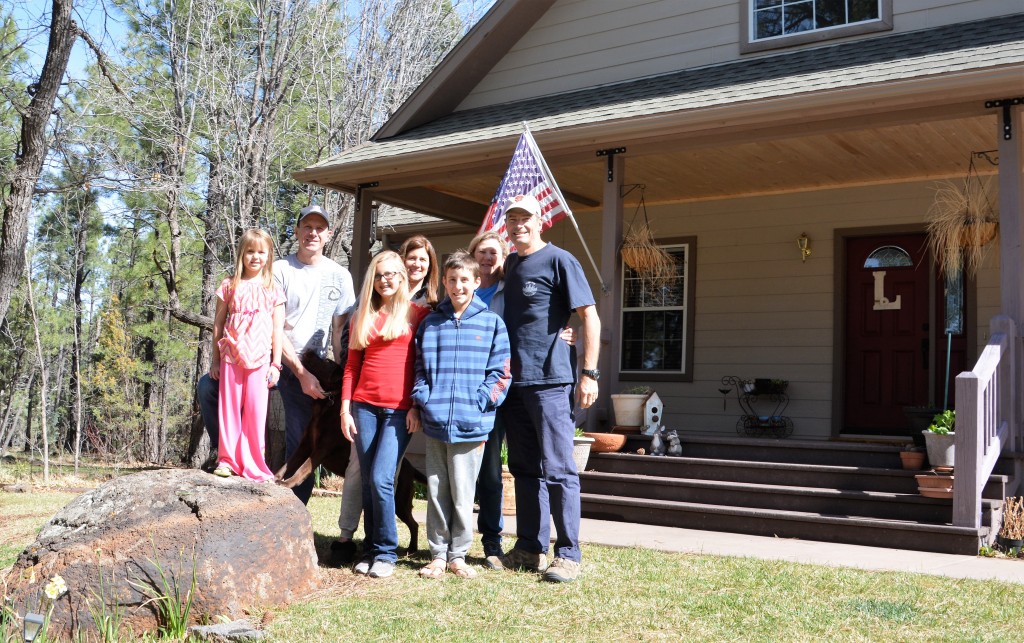
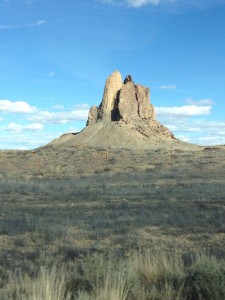
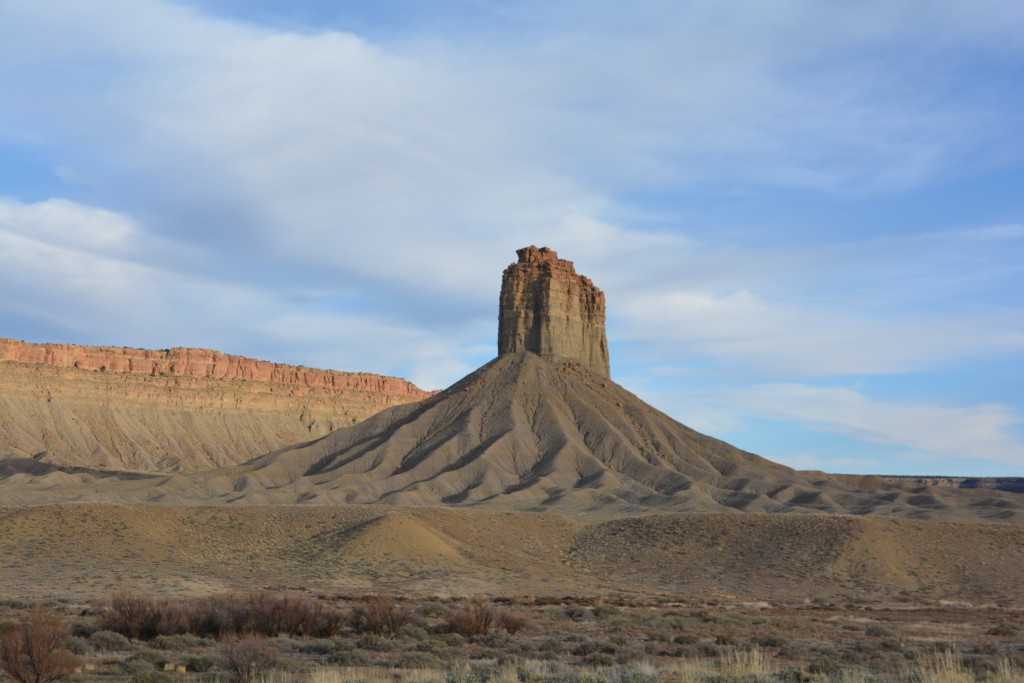
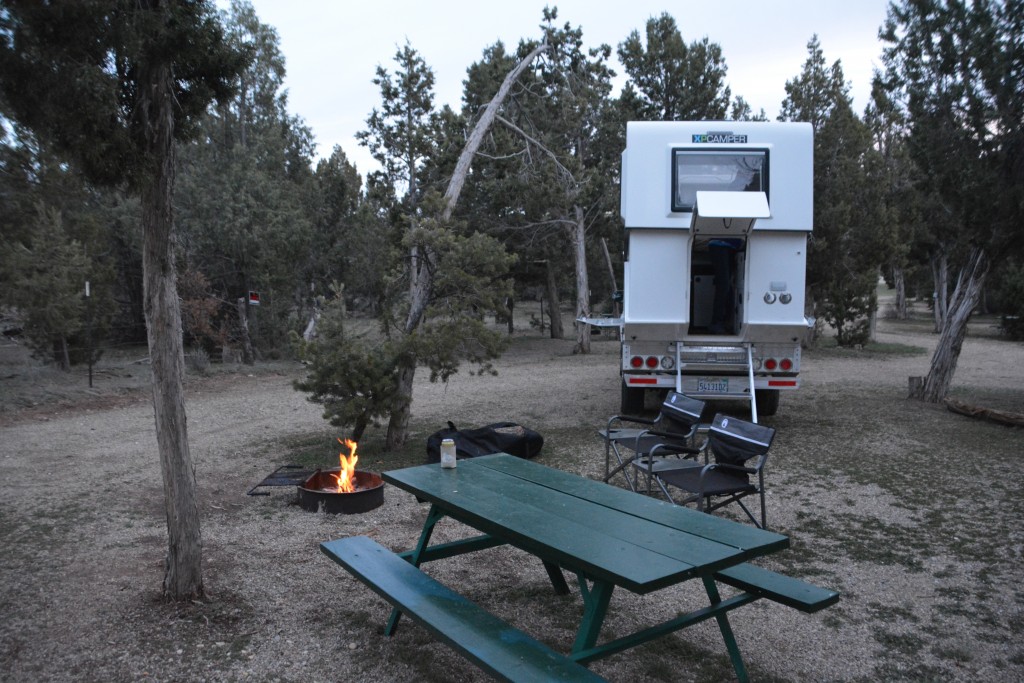
Comments
Arizona is part of the family — No Comments
HTML tags allowed in your comment: <a href="" title=""> <abbr title=""> <acronym title=""> <b> <blockquote cite=""> <cite> <code> <del datetime=""> <em> <i> <q cite=""> <s> <strike> <strong>